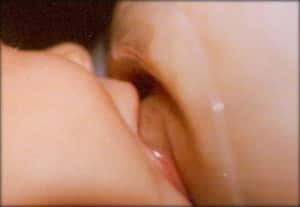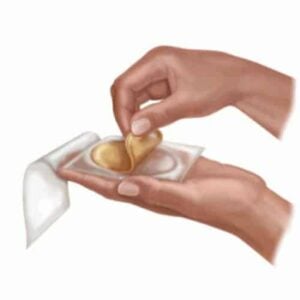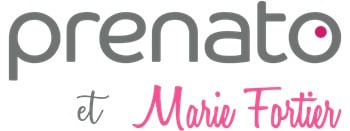Make sure you read the previous entry – Causes of Nipple Pain
There are many practical tips to help with nipple injuries and pain. All you have to do is identify the cause then act to correct the problem.
- If the position is re-established and your baby is better able to take your breast and it seems sufficient, we suggest placing a drop of milk on your nipple. It will help soften the nipple or the crust if necessary. If the nipple is dry and the baby takes it, it can cause more pain. Also, when the baby is feeding, we encourage you to squeeze or press your breast to help with milk ejection. The baby will suck less vigorously, and it might cause you less pain.
- Nipple shields aren’t a treatment in and of itself but can help when the mother is in a lot of pain.

Nipple shields We normally use them for mothers with flat or injured nipples and when the mother has a high ejection reflex to diminish flow into the baby’s mouth.
I recently used a nipple shield with a mother who had large nipples and the baby a small mouth. The baby wasn’t able to take the full nipple, just the tip. The use of a nipple shield with a pointed tip fixed the problem in two minutes. The mother had tried to fix it over three weeks postnatal. Don’t hesitate! If you’re at this point, it’s because you have tried the other options. You can use them on a single side if the problem affects one nipple only or alternate them from breast to breast based on different situations. You can also use them only at the start of feeding, when flow is stronger, then remove them for a direct feed on the nipple for better stimulation and lactation.
You have to purchase the right size for your nipples. This is why I recommend you get examined by a professional to be properly advised. They will measure the diameter of the nipple base and add 5 mm for comfort.
Nipple shields comes in 3 different sizes (16, 20 and 24 mm). You need to know how to install it and the precautions you need to take when using it. You should understand that the baby sucks the nipple shield, which helps the mother, but it can diminish the stimulation of the neurotransmitters that are in the nipple, on the areola. Consequently, milk production can diminish, which we don’t want. The nipple shield’s thin silicone is helpful, though, as it adheres to the breast most of the time. If you use a nipple shield and after 24–48 hours your situation doesn’t improve, it might not be the right solution. You have to go back and re-examine the problem and choose another option.
The use of a nipple shield is normally temporary and short-term. When it’s suggested for a new mother for a problem, the first goal is to stop using it when the situation is back to normal.
Watch this video where I explain nipple shield details (French only):
- You have to soothe and heal chapping and cracking. To do so, you can use a hydrogel pad which is a sterile polyurethane hydrophilic compress. Many

Hydrogel Compress dressings and compresses are made for burns, but you can also use them for nipple injuries and lesions. It is an adhesive pad which looks like rubber. When you buy it, it is important to put it in the refrigerator as the compress needs to be cold. Store it in the fridge and when you stop breastfeeding, take the compress and remove the plastic film. Stick the compress directly on the nipple and put your bra on over it. The hydrogel pad keeps the area damp and promotes the scarring process. As it is cold, it also soothes the mother after breastfeeding and prevents clothing or the bra from rubbing the painful nipple.
After use, rinse it with clean water, place it in its package then back in the fridge. It cools down when you breastfeed, and when you’re done, place it once again on the nipple.
If there is no improvement after 72 hours, the treatment isn’t adequate and you need to consult as soon as possible.
A few precautions: never use a hydrogel compress when there is mycosis (fungoides). When using the compress, never apply cream or breast milk under it. If there is mycosis, it will increase the likelihood of spreading as the area is damp. Also note that the lifespan of a hydrogel pad is seven days—after that, throw it away.
Sometimes, despite all the techniques used to help the mother and her nipples, they continue to be painful and you have to temporarily stop breastfeeding or supplement the baby.
You can use different techniques to give the baby breast milk without a bottle to ensure that you don’t confuse them when returning them to your breast later. You can use things such as:
- A small medicine cup that you can press between your fingers to give it a shape to slowly pour the liquid in the baby’s mouth.
- A spoon—place it directly on the baby’s lower lip to give them milk. Other accessories that look like a spoon are on the market to help the baby take milk.
- As a last resort, you can use devices that help feed them with a syringe and a small Lact-Aid tube. According to different professions and teams, the use of Lact-Aid should be avoided as the flow arrives rapidly and there are higher risks of choking. To stimulate milk production, you can place the tube directly on the mother’s breast with the advice of a breastfeeding professional. When taken, the tube is in the baby’s mouth at the same time as the nipple. The baby stimulates production while at the same time receiving their milk via the syringe or the tube.
- There are also pharmacological methods.
If you would like to learn about possible pharmacological treatments, read the following section – Pharmacological Treatments for Nipple Injuries.
Marie
The Baby Expert




